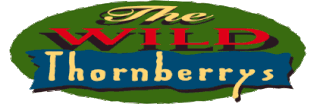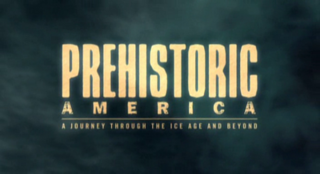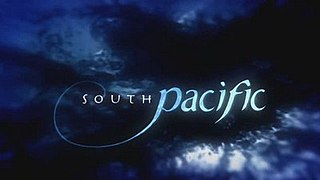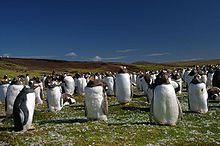
The Wild Thornberrys is an American animated television series created by Arlene Klasky, Gábor Csupó, Steve Pepoon, David Silverman, and Stephen Sustarsic for Nickelodeon. The series portrays the zany hijinks of an American family of wildlife documentary filmmakers known as the Thornberrys, which consist of the British nature documentary television host Nigel, his wife and camera operator Marianne, their 16-year-old daughter Debbie, their younger daughter Eliza, their adopted son Donnie, and a chimpanzee named Darwin. The series focuses in particular on Eliza, who has a magical ability to communicate with animals. The Thornberry family travels to every continent and wildlife environment in the ComVee, a recreational vehicle equipped with safety mechanisms to handle any terrain or body of water, to document their journeys in detail, with typical episodes involving Eliza befriending an animal and subsequently finding herself in peril.
The BBC Studios Natural History Unit (NHU) is a department of BBC Studios that produces television, radio and online content with a natural history or wildlife theme. It is best known for its highly regarded nature documentaries, including The Blue Planet and Planet Earth, and has a long association with David Attenborough's authored documentaries, starting with 1979's Life on Earth.

A nature documentary or wildlife documentary is a genre of documentary film or series about animals, plants, or other non-human living creatures, usually concentrating on video taken in their natural habitat but also often including footage of trained and captive animals. Sometimes they are about wildlife or ecosystems in relationship to human beings. Such programmes are most frequently made for television, particularly for public broadcasting channels, but some are also made for the cinema medium. The proliferation of this genre occurred almost simultaneously alongside the production of similar television series which is distributed across the world.

Planet Earth is a 2006 British television series produced by the BBC Natural History Unit. Five years in the making, it was the most expensive nature documentary series ever commissioned by the BBC and also the first to be filmed in high definition. The series received multiple awards, including four Emmy Awards, a Peabody Award, and an award from the Royal Television Society.

Wild Africa is a British nature documentary series created and produced by the BBC. It explores the natural history of the African continent. It was first transmitted on 7 November 2001 on BBC Two in the United Kingdom and comprises six episodes. Each concentrates on a particular environment. The producers use aerial photography and wildlife footage to show how natural phenomena such as seasonal changes influence the patterns of life. Wild Africa was produced by the BBC Natural History Unit and narrated by Fergal Keane.

Wild Down Under is a BBC nature documentary series exploring the natural history of the Australasian continent, first transmitted in the UK on BBC Two in September 2003. It was broadcast in Australia under the title Wild Australasia in February 2004.

Wild Caribbean is a four-part BBC nature documentary series exploring the natural and cultural history of the Caribbean Islands and Sea. It was first transmitted in the UK on BBC Two in January 2007. The series was produced by the BBC Natural History Unit and narrated by actor Steve Toussaint. This series also aired in Australia on ABC1 each Sunday at 7:30pm from 15 February 2009.

Planet Earth: The Future is a 2006 BBC documentary series on the environment and conservation, produced by the BBC Natural History Unit as a companion to the multi-award-winning nature documentary Planet Earth. The programmes were originally broadcast on BBC Four immediately after the final three episodes of Planet Earth on BBC One. Each episode highlights the conservation issues surrounding some of the species and environments featured in Planet Earth, using interviews with the film-makers and eminent figures from the fields of science, conservation, politics, and theology. The programmes are narrated by Simon Poland and the series producer was Fergus Beeley.

Land of the Tiger is a BBC nature documentary series exploring the natural history of the Indian subcontinent, first transmitted in the UK on BBC Two in 1997. The production team covered the breadth and depth of India, from the Himalayan mountains in the north to the reef-fringed islands of the Indian Ocean, to capture footage of the country's wild places and charismatic wildlife.

The BBC Wildlife Specials are a series of nature documentary programmes commissioned by BBC Television. The series premiered in 1995, and 22 specials have been produced to date, with most of the more recent ones consisting of multiple episodes. The earlier programmes were produced in-house by the BBC's Natural History Unit, but the more recent Spy in the ... titles were made by the independent John Downer Productions. The first 18 specials, through 2008, were narrated by David Attenborough. Polar Bear: Spy on the Ice (2010), Penguins: Spy in the Huddle (2013) and Dolphins: Spy in the Pod (2014) were narrated by David Tennant.
William Goodchild is a composer, orchestrator and conductor who produces music for film, television and the concert hall.

Life is a British nature documentary series created and produced by the BBC in association with The Open University. It was first broadcast as part of the BBC's Darwin Season on BBC One and BBC HD from October to December 2009. The series takes a global view of the specialised strategies and extreme behaviour that living things have developed in order to survive; what Charles Darwin termed "the struggle for existence". Four years in the making, the series was shot entirely in high definition.

Wild New World is a six-part BBC documentary series about Ice Age America that describes the prehistory, landscape and wildlife of the continent from the arrival of humans to the welcome of the Ice Age. It was first transmitted in the UK & JP on BBC Two from 3 October to 7 November 2002. Like several other BBC programmes, it contains both computer graphics and real-life animals. Occasionally, footage of non-American counterparts of the extinct North American beasts are used in juxtaposition with footage of native American animals, like the pronghorn.

South Pacific is a British nature documentary series from the BBC Natural History Unit, which began airing on BBC Two on 10 May 2009. The six-part series surveys the natural history of the islands of the South Pacific region, including many of the coral atolls and New Zealand. It was filmed entirely in high-definition. South Pacific was co-produced by the Discovery Channel and the series producer was Huw Cordey. It is narrated by Benedict Cumberbatch. Filming took place over 18 months in a variety of remote locations around the Pacific including: Anuta, Banks Islands, French Frigate Shoals, Papua New Guinea, Palmyra, Kingman Reef, Tuvalu, Palau, Caroline Islands, Tuamotus and Tanna Island in Vanuatu.
The BBC Atlas of the Natural World is the title of two compilations of DVDs consisting of eight separate nature documentary series produced by the BBC Natural History Unit between 1987 and 2005. The boxed sets, each consisting of 4 series and 6 DVDs, are subtitled "Western Hemisphere and Antarctica" and "Africa and Europe". They were released on 31 October 2006 and 2 October 2007, respectively, for DVD Region 1. They were later released in DVD Region 4, although still with NTSC video.

Congo is a 2001 BBC nature documentary series for television on the natural history of the Congo River of Central Africa. In three episodes, the series explores the variety of animals and habitats that are to be found along the river's 4,700 km (2,922 mi) reach.

Wild Burma: Nature's Lost Kingdom is a British documentary television series that first broadcast on BBC Two on 29 November 2013. The three-part series explores Myanmar's forests. The filmmakers are Gordon Buchanan, Ross Piper and Justine Evans. The scientists for the series are Chris Wemmer, Darrin Lunde, Khyne U Mar, Kristofer Helgen and Nicole Edmison.

Hidden Kingdoms is a British documentary television series that was first broadcast on BBC One on 16 January 2014. The three-part series is narrated by Stephen Fry and shows how animals experience the world from their perspective. Animals shown include a chipmunk, dung beetle, Rufous elephant shrew and treeshrew, and Japanese rhinoceros beetle.

Wild Brazil is a British nature documentary series, first broadcast on BBC Two and BBC Two HD in January 2014. Produced by the BBC Natural History Unit and narrated by Stephen Mangan, the three-part series focuses on three animal families, one of tufted capuchins, one of giant otters and one of South American coatis, but also looks at other animals like jaguars. Each episode is followed by a ten-minute Wild Brazil Diaries segment, illustrating the techniques used to film a particular subject.

The Hunt is a 2015 British nature documentary series made for BBC Television, first shown in the UK on BBC One and BBC One HD on 1 November 2015. The series is narrated by David Attenborough.



















